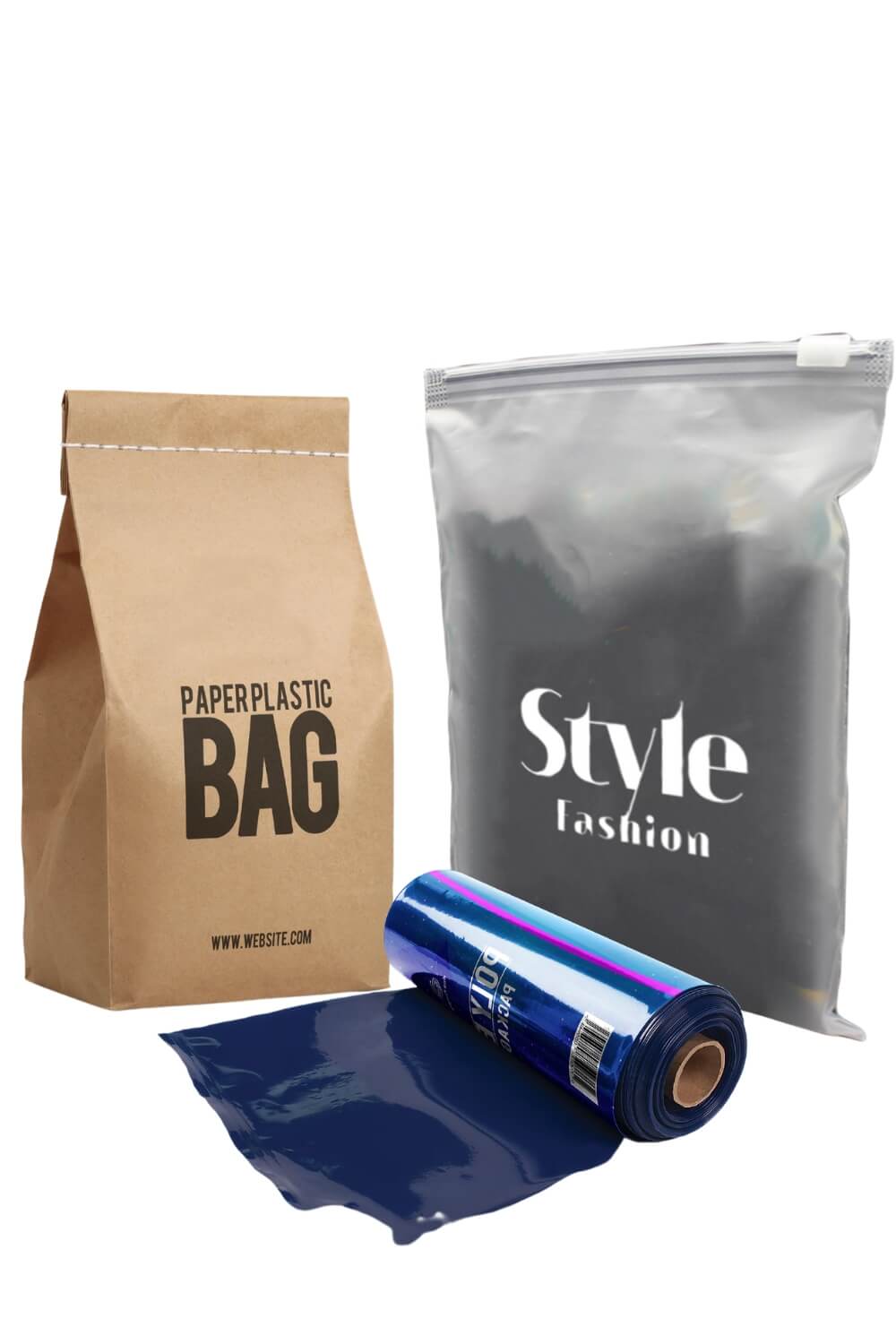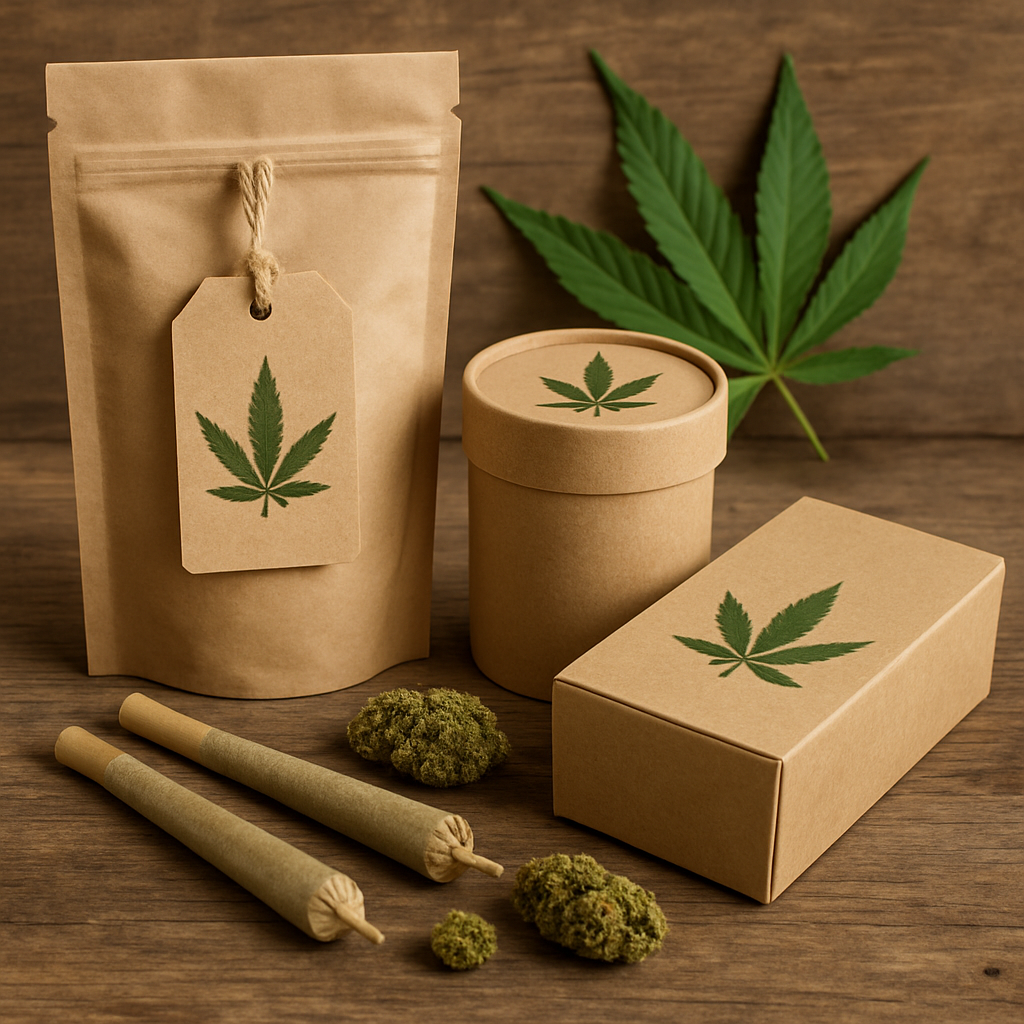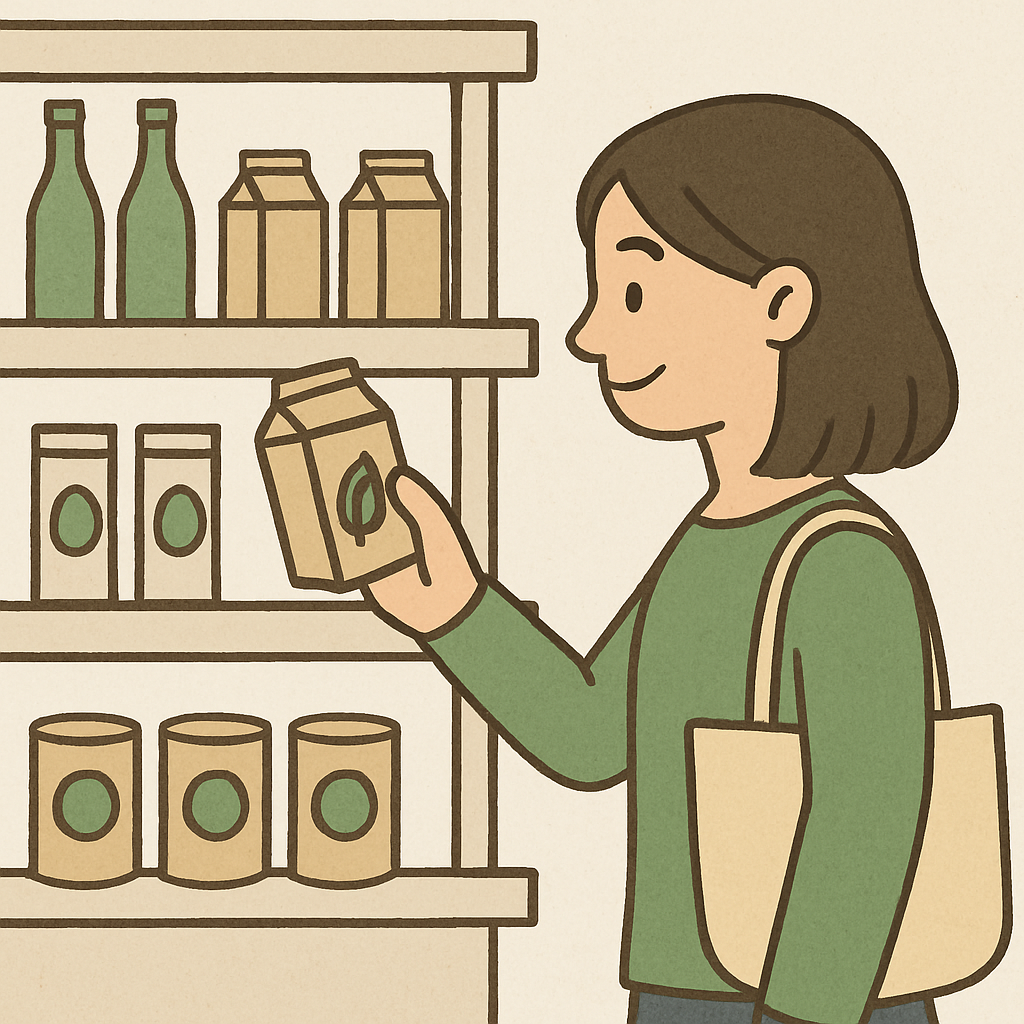The cannabis industry is undergoing a green revolution. As awareness of environmental issues grows, so does the demand for sustainable cannabis packaging. Consumers are becoming increasingly eco-conscious, seeking products that align with their values. This shift is pushing the industry to adopt more sustainable packaging solutions.
At the same time, regulations are tightening. Many regions now require eco-friendly packaging, driving innovation within the cannabis sector. Sustainable packaging options include biodegradable, recyclable, and compostable materials — all aimed at reducing the environmental impact of cannabis products.
Brands that embrace eco-friendly packaging not only enhance their reputation but also build stronger consumer loyalty by demonstrating a clear commitment to sustainability. This move towards sustainable packaging is more than just a trend; it is a necessary step for the future of the cannabis industry.
This blog explores the materials and innovations shaping sustainable cannabis packaging today.
The Rise of Sustainable Cannabis Packaging: Why It Matters
Sustainable cannabis packaging has become vital in today’s market. The industry is under increasing scrutiny for its environmental footprint, making the adoption of green practices crucial.
Packaging plays a significant role, as traditional packaging often relies on plastics and non-recyclable materials that contribute heavily to waste and pollution. Switching to sustainable options can greatly reduce this environmental impact by conserving resources and minimizing waste.
Key Benefits of Eco-Friendly Packaging
-
Reduces landfill waste
-
Conserves natural resources
-
Aligns with evolving regulatory requirements

Sustainability is important not only for the planet but also for business. Brands leveraging sustainable packaging can distinguish themselves. They attract eco-minded consumers and enhance their image.
In conclusion, sustainable cannabis packaging is more than a buzzword. It represents a commitment to environmental responsibility. As the industry evolves, embracing these solutions will be key. This shift supports both a healthier planet and business growth.
Key Drivers: Consumer Demand and Regulatory Pressures
Consumer awareness of environmental issues is growing rapidly. People want their purchases to reflect their values, and this trend extends to cannabis products as well.
Consumers now demand eco-friendly packaging. They seek brands that prioritize sustainability, reflecting a preference for responsible manufacturing.
Regulations are also influencing this shift. Governments are imposing stricter environmental laws, pushing businesses to adopt sustainable packaging solutions.
Some key regulatory drivers include:
-
Bans on single-use plastics
-
Requirements for recyclable materials
-
Environmental impact assessments
These drivers significantly impact business practices. Failure to comply can result in fines or lost market access. Hence, companies have compelling reasons to adapt.
The intersection of consumer demand and regulation is powerful. It accelerates the move toward sustainable packaging solutions. The cannabis industry must keep pace with these changes to thrive. As regulations evolve, so must strategies to meet both consumer and legal expectations.
Eco-Friendly Materials: Biodegradable, Recyclable, and Compostable Options
Sustainable cannabis packaging relies heavily on eco-friendly materials that minimize environmental impact and waste.
Biodegradable materials are a top choice for sustainable packaging. They break down naturally, leaving no harmful residues. Popular options include hemp, cornstarch, and recycled paper.
Recyclable materials offer another sustainable solution. These can be processed to create new products, reducing the need for new raw materials and lowering energy consumption. Examples include glass, aluminum, and certain plastics.
Compostable materials are gaining popularity as well. These decompose into nutrient-rich organic matter under the right conditions, benefiting soil health. Common compostable materials include bioplastics from plant sources, bagasse (sugarcane fiber), and mushroom-based packaging.

The adoption of these materials reflects a shift in industry practices. Cannabis companies are making environmentally responsible choices. This aligns with consumer demand for sustainable options.
Biodegradable, recyclable, and compostable materials each have their merits. The choice depends on the specific application and market conditions. Companies may consider a combination of materials to achieve optimal sustainability.

Switching to eco-friendly materials can seem daunting but is achievable. Many companies are already setting a precedent. This offers inspiration and practical insights for others.
Embracing these materials is essential for a greener future. It supports sustainability goals and enhances brand reputation. By choosing eco-friendly materials, companies contribute positively to the environment while meeting regulatory standards and consumer expectations.
Innovative Packaging Designs and Solutions
Innovation is at the forefront of sustainable cannabis packaging. Creative designs help reduce waste and improve functionality.
One innovative trend is minimalistic packaging. By using fewer materials, companies reduce resource consumption. This approach also often results in cost savings.
Modular designs are also gaining traction. These allow components to be reused or easily replaced without discarding the entire package. This approach can lead to long-term environmental and economic benefits.
Several key innovative solutions include:
- Edible packaging: Made from natural, safe ingredients that can be consumed.
- Plantable packaging: Contains seeds, allowing users to grow plants after use.
- Smart packaging: Incorporates technology for enhanced consumer interaction and waste tracking.

These designs are not just about aesthetics. They reflect a shift toward sustainable practices in the cannabis industry. By leveraging such designs, companies make strides in reducing their environmental footprint.
As packaging solutions evolve, they align with broader sustainability movements. The cannabis industry continues to explore new materials and technologies. This drive facilitates the development of cutting-edge sustainable packaging designs that encourage eco-conscious consumerism.
Compliance, Safety, and Child-Resistant Features
Regulations have a significant role in shaping sustainable cannabis packaging solutions. Ensuring safety while adhering to environmental standards is crucial.
Packaging must comply with child-resistant regulations to prevent accidental access. Eco-friendly materials are now being incorporated into these designs, balancing safety with sustainability.
Incorporating these necessary features doesn't mean compromising on green goals. Many sustainable packaging solutions now offer safety without sacrificing environmental integrity.
Key features in compliant packaging include:
- Child-resistant locks: Designed to meet safety standards.
- Tamper-evident seals: Indicate product safety and purity.
- Clear labeling: Ensures regulatory compliance.
These features ensure that products are not only safe for consumers but also environmentally sound. By prioritizing compliance and safety, cannabis brands protect their customers and the planet simultaneously.
The Business Case: Brand Reputation, Cost Savings, and Consumer Loyalty
Sustainable cannabis packaging is not just good for the environment, it's good for business. Brands that prioritize eco-friendly practices can enhance their reputation.
Consumers today are more likely to support companies with green initiatives. Sustainable packaging provides an opportunity for brands to differentiate themselves in a competitive market.
There's also a financial aspect to consider. Though the initial investment in eco-friendly packaging might be higher, it often leads to long-term savings. Reducing waste disposal costs and improving material efficiency can lower expenses over time.
Moreover, sustainable packaging fosters stronger consumer loyalty. Customers appreciate brands that align with their values and are likely to stay loyal to environmentally responsible companies.
Benefits of sustainable packaging in business:
- Enhanced brand reputation: Aligns with consumer values.
- Cost savings: Reduces waste and disposal costs.
- Increased customer loyalty: Fosters connection through shared values.

Incorporating sustainable cannabis packaging ultimately benefits both the planet and the bottom line.
Overcoming Challenges: Costs, Supply Chain, and Education
Transitioning to sustainable cannabis packaging poses challenges. Initial costs can be high, deterring some companies. However, investing in sustainable materials often leads to long-term gains.
Supply chain complexities also arise. Sourcing eco-friendly materials requires partnerships with reliable suppliers. Companies must navigate these relationships carefully to maintain quality and consistency.
Education is crucial for both businesses and consumers. Brands need to train their teams on sustainable practices. Informed employees can better engage with eco-conscious customers.
Strategies to overcome these challenges:
- Evaluate long-term savings: Prioritize sustainable investments.
- Build supplier relationships: Ensure access to quality materials.
- Educate teams and consumers: Promote understanding and adoption.
Addressing these challenges demands a proactive approach, but the rewards—economic, environmental, and reputational—are worth the effort.
The Future of Sustainable Cannabis Packaging: Trends and Innovations
The future of cannabis packaging promises exciting innovations. As technology advances, new materials and designs are emerging to revolutionize the industry. This innovation aims to meet eco-friendly goals while enhancing product appeal.
We can expect greater emphasis on plant-based materials. Cannabis packaging made from hemp and other biodegradable options will become more widespread. These materials are not only sustainable but also align with the cannabis plant's natural essence.
Smart packaging technology is another area to watch. QR codes and digital labels can replace paper instructions and marketing materials. This reduces waste and offers consumers instant access to product information.
Emerging trends and innovations include:
- Hemp-based materials: Biodegradable and sustainable.
- Smart packaging: Digital labels instead of paper.
- Lightweight designs: Reducing transportation emissions.

These advancements position the cannabis industry at the forefront of sustainability. The ongoing evolution of packaging solutions promises a future where innovation and environmental responsibility coexist.
How to Get Started: Steps for Cannabis Brands and Producers
Adopting sustainable packaging can seem daunting, but it is manageable with the right approach. Start by evaluating current packaging practices and their environmental impact. Understanding where improvements are needed is the first step towards change.
Next, explore sustainable options that align with your brand's values and budget. Engage with suppliers who specialize in eco-friendly materials and innovative packaging solutions.
Here are some steps to consider:
- Assess your current packaging practices.
- Research eco-friendly material options.
- Partner with sustainable packaging suppliers.
Being proactive now will ensure your brand not only meets regulatory requirements but also gains consumer trust and loyalty. Sustainable practices today pave the way for industry leadership tomorrow.
Conclusion: Leading the Way to a Greener Cannabis Industry
The shift towards sustainable cannabis packaging is more than a trend. It's a crucial step in safeguarding our planet. By adopting eco-friendly solutions, the cannabis industry can set a powerful example for others.
Achieving sustainability is within reach when brands embrace innovative practices. As more companies commit to this journey, the industry collectively moves towards a greener and more responsible future. The time to act is now.





Leave a comment
This site is protected by hCaptcha and the hCaptcha Privacy Policy and Terms of Service apply.